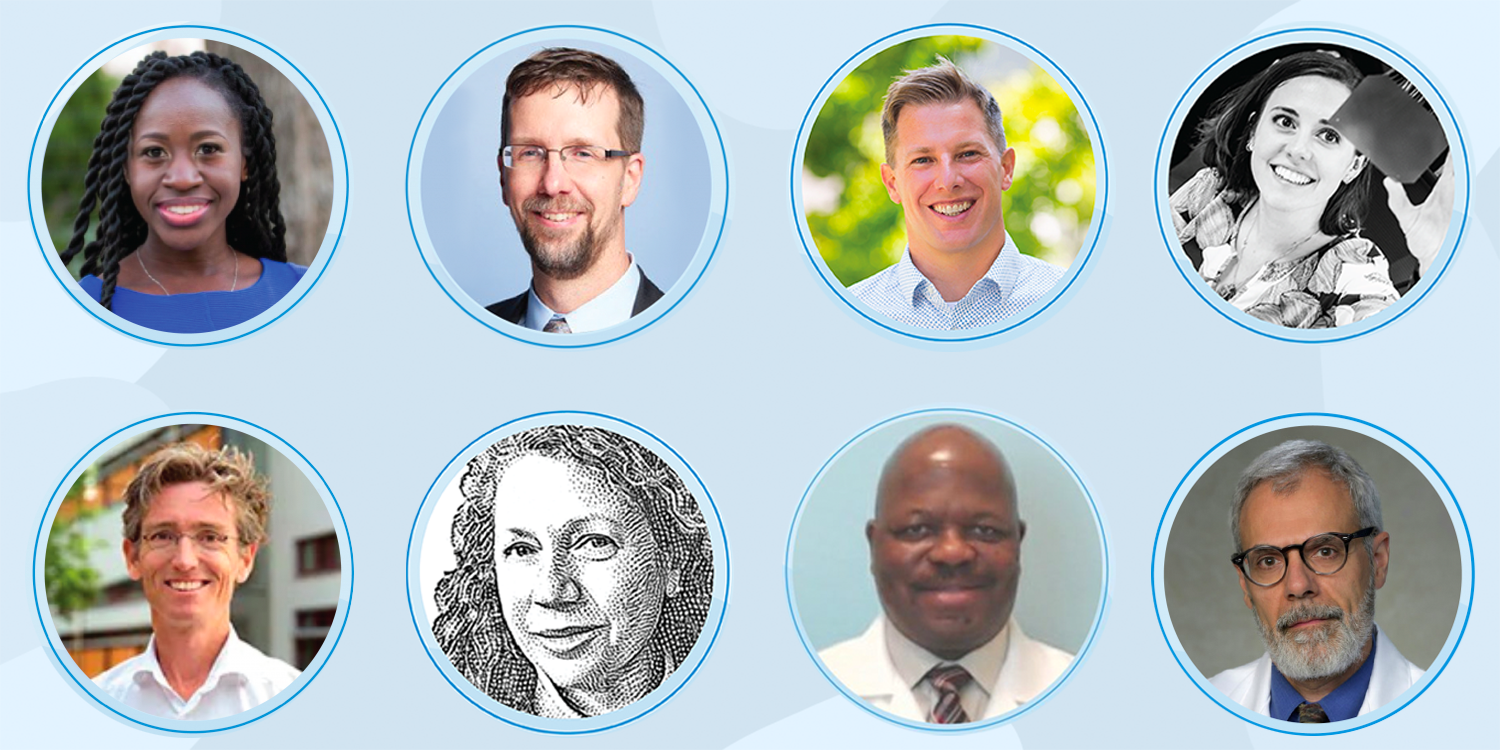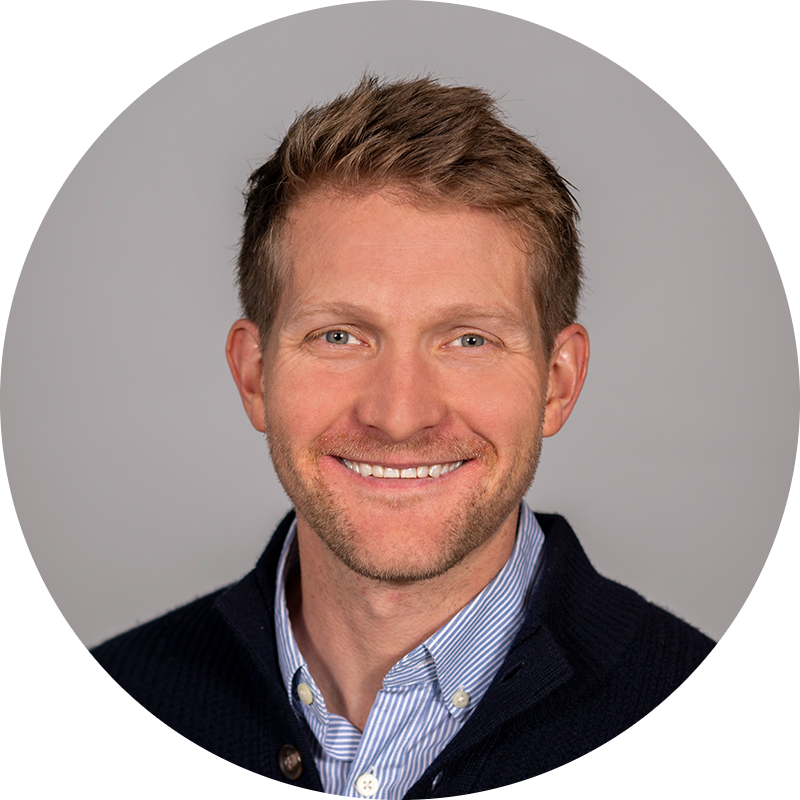The Focal Spot: Mallory Glenn
In this edition of The Focal Spot, Tyler Blackwell interviews Mallory Glenn.
In this edition of the Focal Spot, Tyler Blackwell interviews Laurence Court, PhD, FAAPM.

“I consider myself really lucky to be at MD Anderson because they have a mission of bringing improved care to more and more people. Across the country and the world, they’re really helping all of our efforts by providing critical support. What a blessing to be with an institution that is aligned with our mission to improve healthcare worldwide.”
In this edition of the Focal Spot, I interview Laurence Court, PhD, FAAPM. Laurence is an associate professor in the Department of Radiation Physics at the University of Texas MD Anderson Cancer Center. For the past several years, he has led a laboratory dedicated to creating automated contouring and treatment planning workflows in an attempt to bridge the resource gap internationally, starting with their partnership with clinics in South Africa. In our chat, we explore that important work as well as his path toward medical physics, advice for graduate students, and how he came to learn Japanese.
Tyler:Did I see on Twitter that you were doing something work-related in South Africa?
Laurence:Yes. Our main project is to develop automated contouring and planning specifically for clinics with limited resources, and our main partners are in South Africa. We’ve been doing that for about five years, so I’ve spent a lot of time in South Africa.
If you look at the availability of radiotherapy worldwide, it’s quite poor in many countries, especially in Africa. A few of us have wanted to do some more global work to try and help outside of the United States, so we took advantage of a grant opportunity that came up, and we went to South Africa to try and understand the situation.
Tyler:What an incredibly rewarding experience. Given your time there, what is your perspective on the challenges in radiotherapy in South Africa?
Laurence:The challenges are many, but they could do with more people and more resources. So that’s where we’re trying to help. Overall, I’m very impressed with their teams and their dedication. They just have so many more patients than they can handle. They just need more people with the proper training and skills, and they just don’t have enough.
To that end, we’ve basically been developing an automated contouring and automated planning workflow that will help with the throughput of patients while maintaining quality and consistency. And we’re hoping to treat our first patient in South Africa in 2022. That’s the plan.
Tyler:How are you approaching the automated planning piece? Are you focusing on specific sites? Doing mostly 3D? IMRT and VMAT?
Laurence:Yes, to all of those. These countries have varying levels of access to different technologies. They also have diverse patient populations and different clinical approaches. So in the long-term, our goal is to help with as many of those as possible. We can’t just offer IMRT or VMAT because not everyone has access to IMRT and VMAT. Our portfolio is relatively small right now, but we’re trying to increase it bit by bit to accommodate all of those different approaches.
For example, we have three approaches for cervical cancer that we’ll be offering. We have a bony landmark-based four-field box, which is a relatively straightforward approach. For slightly more advanced locations, we have a soft tissue-based four-field box where we contour the targets automatically and then create the treatment plan. And then we have VMAT for the best-equipped centers.
Tyler:Well, what you’re describing sounds like quite an undertaking. Where do you think this project will be in five years?
Laurence:In five years, we stand a pretty good chance of having a pretty good solution for most patients. Gross tumor contouring is the one remaining question, but I think that’s resolvable. But apart from that, the automation for contouring and planning is well within our sights.
Beyond that, scaling will take a little bit longer because each country has its own legal and medical system nuances, so that will take longer. We’re not going to run out of things to work on, that’s for sure.
Tyler:I want to know a bit about you. Walk me through your history.
Laurence:I’m from the UK, born on the south coast. My dad was in the Navy and later became a teacher in Essex, just east of London. We moved there when I was eight. I lived there basically my entire childhood life.
Tyler:What were you interested in when you were a kid? What captivated you?
Laurence:I was a pretty quiet kid. I didn’t do much sport. I did play the cello, and through that, I joined the county orchestra, which felt like a big deal since we did tours and things like that. I got to go to Poland and Italy and places like that. My kids are in all sorts of clubs and activities, and that was certainly not me.
Tyler:How did that come about discovering medical physics then?
Laurence:I wondered—like people are when they’re 18—what I should do with my life, and I applied for a job for what I think probably was the equivalent to a physics assistant-type job, but I didn’t know what it was. It just happened to be in a town that I wanted to be living in. I can’t claim to have any better reasons than that.
It was at this time that I discovered that there was this thing called medical physics, so I applied to university and ultimately studied physics with a medical physics emphasis at University College in London. I did digital mammography for my Ph.D. there.
After finishing up there, I somehow became very interested in getting a fellowship in Japan, so I did just that. I learned some Japanese and worked at Sony in their medical equipment group for about a year. And then—still in Japan—I ended up at Canon in their medical development department.
Tyler:What were you working on there?
Laurence:It was a digital radiography system. Everything is DR now, but these were the early days. As part of the physics group, we worked on Monte Carlo, resolution, and physics-type questions for the detector development. I thoroughly enjoyed myself. I learned a lot from my days at Canon and have applied those lessons to how I run and operate our lab group.
Tyler:You’re at MD Anderson now. What’s your involvement with the graduate program there?
Laurence:My role is director of admissions, which just means there’s an extended flurry of activity around application time, but that’s really the extent of it. I do a little bit of teaching on and off. But my primary involvement is with the ten or so students we have in the lab.
Tyler:Given that you have some background with graduate students, do you have any advice for students or young professionals that have quite a lot ahead of them?
Laurence:I think the main one for graduate students is whatever your project is, make a concerted effort to focus on that topic and build expertise in that area. This is your opportunity to become an expert in something.
And the other thing—which is perhaps the opposite of what I just said—is once you’re working on projects, it’s okay to change direction. I am a big supporter of making bold changes if you discover a new opportunity or realize that what you were doing before isn’t quite what you thought it was.
Tyler:What about graduate students that may be intimidated about the whole process? Students can often feel as if they know close to nothing compared to their advisors—or even compared to more seasoned grad students. And then the other thing is that a lot of times, advisors are very busy teaching classes, performing their own research, or attending to clinical duties. This lack of availability, be it real or imaginary, can hinder that early success and confidence.
Laurence:You make valid points. Unfortunately, the pandemic has made this even more challenging. I can understand this sort of imposter syndrome effect:
“Wow, they’re so successful. I can never be that person. It’s never going to work.” When people present their work, they don’t tend to present their failures; they present their successes. So now, in our lab meetings, we encourage people to present all the details of their journey, including their failures and mishaps. We also had a big Zoom call recently where we got alumni from the group to come back to discuss the trials and tribulations of graduates and the holes you can fall into, which provided some long-term context.
Your other point was about access to people. I’d like to think that technology is helping with that. We all work through Microsoft Teams, which means students can just message me anytime about any topic. We also have multiple faculty work with each student so mentorship doesn’t have to come 100% from the advisor. There’s all sorts of mentorship, as well as mentorship and advice from your peers.
Tyler:What do you do for fun? What do you do at home?
Laurence:My whole home life revolves around my kids and my wife. We do all sorts of things, and we like to play games and hang out.
Tyler:What did you want to be when you grew up?
Laurence:That’s a question that has many answers. I wanted to be a nurse. I wanted to be an architect. I didn’t want to be a train driver. But pretty much everything else, I think. At one time, I wanted to be a cellist in the Marines.
Tyler:Are you a dog person or a cat person?
Laurence:I have been turned into a dog person because my entire family loves dogs, so I have no choice.
Tyler:What’s the vacation you’ve ever taken?
Laurence:I can’t remember a single vacation that, at its conclusion, it was not my favorite vacation. But probably my all-time favorite was Cairns in Australia. There’s so much to do—just a terrific place.
Tyler:On the scale from one to 10, how weird are you?
Laurence:I’m a one. I don’t think I’m weird at all, in my mind.
Tyler:I take that to mean you must be extremely strange.
Laurence:Maybe a little bit.
If you have a question or comment for Laurence, drop it below or participate in the discussion on LinkedIn or Twitter!


Tyler is a board-certified medical physicist with extensive clinical experience in radiation therapy. He is active in the medphys community including several AAPM committees, the AAPM Board of Directors, and as an ABR orals examiner. Tyler dabbles in real estate investing, loves preparing breakfast for his three kiddos, and enjoys playing adult coed soccer.
Related tags: RadOnc News The Focal Spot
In this edition of The Focal Spot, Tyler Blackwell interviews Mallory Glenn.
In this edition of the Focal Spot, Tyler Blackwell interviews Bette Blankenship, MS, FAAPM.
In this edition of the Focal Spot, Tyler Blackwell interviews Stephen Kry, PhD.
Leave a comment